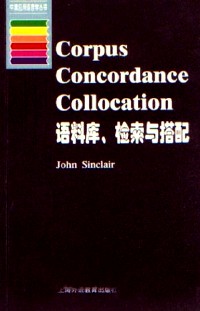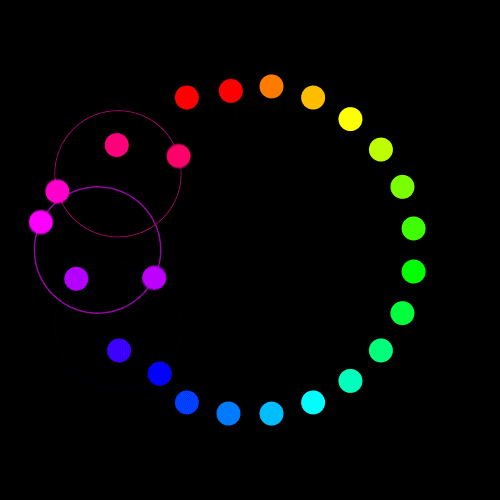
Corpus, concordance, collocation
副标题:无
分类号:
ISBN:9787810465748
微信扫一扫,移动浏览光盘
简介
這是一部論述如何建立語料庫、進行詞語檢索和詞語搭配分析的學術專著。作者J?辛克萊是伯明翰大學現代英語教授,主要從事話語研究和計算語言學研究,兼任英國議會、全國語言教育委員會等機構的顧問,科林斯伯明翰大學國際語言數據庫的項目主持人。
近年來,計算機幾經更新換代。隨之,運用計算機進行的語言分析也有了很大的進展。這種分析展示了語言形式及其使用的一些不容置疑的特徵,這是用傳統描述方法無法得出的。作者描述了計算語言學的發展狀況,詳細闡明了有關語料庫建立的具體過程,以及從語料庫使用而得出的對語言的進一步認識。它不僅可以作為語料庫語言學研究的入門讀物,也可為語言學和應用語言學研究提供數據。
全書共分9章。前兩章針對初步接觸語料庫語言學的讀者的一些實際問題作出解答。語料庫是存放語言素材或語料文本的「倉庫」,是利用語料庫對語言某個方面進行研究的基礎。因此第一章談語料庫的建立。鑑於樣本語料庫只是一個有限的彙集,不敷使用,但實際使用中的語言的數據是無限的,因此建立一個監控語料庫的設想便應運而生。監控語料庫和語言本身一樣,是處於不斷發展之中的。它能過濾和篩選材料,並只保留必要的有關材料。伯明翰大學的第一個監控語料庫已具雛形。第二章談文本的基本處理,介紹用檢索軟件處理語料的基本原理和方法。第三章談如何從語料庫取得用法的證據。第四章談詞的意義和結構,對「yteld」這個單詞的不同意思的細微差別作了詳細的分析。第五章討論詞和詞組問題,把對動詞短語的綜述和含有「set」動詞短語的分析研究結合起來,對詞語選擇與上下文情景的相互關係作了說明。第六章討論詞彙和語法匯合的情況,提出了從具體的實例推導出普遍規律的方法,介紹通過語料庫建立新的語法體系的初步成果。第七章提出對語料庫例句的評價問題;作者認為通過文本處理得出的證據本身不一定可靠,需做評估甄別。第八章著重分析詞語搭配問題。作者認為語言本身存在著有趣的詞語搭配方式,一些單詞由於某種原因互相結合,而另外一些單詞則互相排斥;由此提出了「慣用原則」。第九章強調用通用語言來解釋語言,即「以詞釋詞」。作者總結了在研究中的得出的兩個主要觀點︰(1)我們使用語料庫來研究語言的方法比原來想像的重要的多。(2)如果詞典裡的定義是用一般英語寫的,那麼所有解釋中出現的推論和細微的含意都可以用來進一步完善定義。最後,作者指出本書所介紹的內容只是對語料庫語言學研究的一種嘗試。80年代的語料庫在今天看來也許大小了,日新月異的軟件技術與實際需要相比也仍然顯得過於原始。
辛克萊從80年代起就致力於建立和改進Cobuild語料庫,這本書是他根據切身體驗作出的總結和理論概括。從事計算機語言學研究,特別是語料庫語言學研究的讀者,將不難發現這本書的啟發作用和指導作用。它同時也可作為語言學教師的參考書和攻讀語言學和應用語言學專業的研究生的教學用書。
目录
the author and series editors .
foreword
introduction
1 corpus creation
introduction
who should design a corpus?
a general corpus
outline of corpus creation
electronic form
permissions
design
spoken and written language
quasi-speech
formal and literary language
typicality
design criteria
period
overall size
sample size
whole documents
.minimal criteria
provisional corpus
processing
clean-text policy
basic provision
database
maintenance
different kinds of corpora
sample corpora
monitor corpora
features of a monitor corpus
2 basic text processing
introduction
input
words and word-forms
text and vocabulary
frequency list--first occurrence
frequency list--alphabetical
frequency list--frequency order
word frequency profiles
concordances
kwic (key word in context)
longer environments
ordering within concordances
concordance processing
text analysis statistics
selective information
intermediate categories
new approaches
3 the evidence of usage
introduction
existing descriptions
native-speaker introspections
language in use
word-forms and lemmas
concordances
concordance evidence: an example
sense 1: to refuse
other senses
4 sense and structure in lexis
introduction
evidence: main senses
evidence: minor senses
counter-examples: general
counter-examples: first sense
yield with an object
yielding with an object
yielded with an object
descriptive and prescriptive study
counter-examples: second and third senses
yield as transitive verb
doubtful cases
first minor sense
conclusion
5 words and phrases
introduction
phrasal verbs
some numerical facts
combinations of set + particle
the combination set in
nouns
verbs
sense (i)
sense (ii) ..
minor senses
sundry idioms
set in as a phrasal verb
word-forms
subjects
a dictionary entry
other phrasal verbs with set
conclusion
6 the meeting of lexis and grammar
introduction
what is said about of
a corpus view of of
frequency
of outside nominal groups
of in nominal groups
conventional measures
less conventional measures
the status of headword
focus nouns
focus on a part
focus on a specialized part
focus on a component, aspect, or attribute
support
metaphor
double-headed nominal groups
titles
nominalizations
modification of first noun (n1)
mopping up
superlative adjectives
fixed phrases
miscellaneous
evaluation
analysis of examples in table 1
non-nominal instances of of
nominal group
conclusion
7 evaluating instances
introduction
throw away your evidence
text and language
meaning and structure
procedure
findings
conclusion
8 collocation
introduction
two models of interpretation
the open-choice principle
the idiom principle
evidence from long texts
collocation
collocation of back
analysis of the collocational pattern of back
upward collocates: back
downward collocates: back
conclusion
9 words about words
introduction
structure
variation in co-text
about the word itself
what people mean
structure: verb explanations
animate subjects
inanimate subjects
mixed subjects
operators
summary
analysis of the second part
first chunk
second chunk
discussion
applications
inferences and implications
conclusion
summing up
appendix i
appendix ii
appendix iii
bibliography
glossary
index ...
foreword
introduction
1 corpus creation
introduction
who should design a corpus?
a general corpus
outline of corpus creation
electronic form
permissions
design
spoken and written language
quasi-speech
formal and literary language
typicality
design criteria
period
overall size
sample size
whole documents
.minimal criteria
provisional corpus
processing
clean-text policy
basic provision
database
maintenance
different kinds of corpora
sample corpora
monitor corpora
features of a monitor corpus
2 basic text processing
introduction
input
words and word-forms
text and vocabulary
frequency list--first occurrence
frequency list--alphabetical
frequency list--frequency order
word frequency profiles
concordances
kwic (key word in context)
longer environments
ordering within concordances
concordance processing
text analysis statistics
selective information
intermediate categories
new approaches
3 the evidence of usage
introduction
existing descriptions
native-speaker introspections
language in use
word-forms and lemmas
concordances
concordance evidence: an example
sense 1: to refuse
other senses
4 sense and structure in lexis
introduction
evidence: main senses
evidence: minor senses
counter-examples: general
counter-examples: first sense
yield with an object
yielding with an object
yielded with an object
descriptive and prescriptive study
counter-examples: second and third senses
yield as transitive verb
doubtful cases
first minor sense
conclusion
5 words and phrases
introduction
phrasal verbs
some numerical facts
combinations of set + particle
the combination set in
nouns
verbs
sense (i)
sense (ii) ..
minor senses
sundry idioms
set in as a phrasal verb
word-forms
subjects
a dictionary entry
other phrasal verbs with set
conclusion
6 the meeting of lexis and grammar
introduction
what is said about of
a corpus view of of
frequency
of outside nominal groups
of in nominal groups
conventional measures
less conventional measures
the status of headword
focus nouns
focus on a part
focus on a specialized part
focus on a component, aspect, or attribute
support
metaphor
double-headed nominal groups
titles
nominalizations
modification of first noun (n1)
mopping up
superlative adjectives
fixed phrases
miscellaneous
evaluation
analysis of examples in table 1
non-nominal instances of of
nominal group
conclusion
7 evaluating instances
introduction
throw away your evidence
text and language
meaning and structure
procedure
findings
conclusion
8 collocation
introduction
two models of interpretation
the open-choice principle
the idiom principle
evidence from long texts
collocation
collocation of back
analysis of the collocational pattern of back
upward collocates: back
downward collocates: back
conclusion
9 words about words
introduction
structure
variation in co-text
about the word itself
what people mean
structure: verb explanations
animate subjects
inanimate subjects
mixed subjects
operators
summary
analysis of the second part
first chunk
second chunk
discussion
applications
inferences and implications
conclusion
summing up
appendix i
appendix ii
appendix iii
bibliography
glossary
index ...
Corpus, concordance, collocation
- 名称
- 类型
- 大小
光盘服务联系方式: 020-38250260 客服QQ:4006604884
云图客服:
用户发送的提问,这种方式就需要有位在线客服来回答用户的问题,这种 就属于对话式的,问题是这种提问是否需要用户登录才能提问
Video Player
×
Audio Player
×
pdf Player
×


